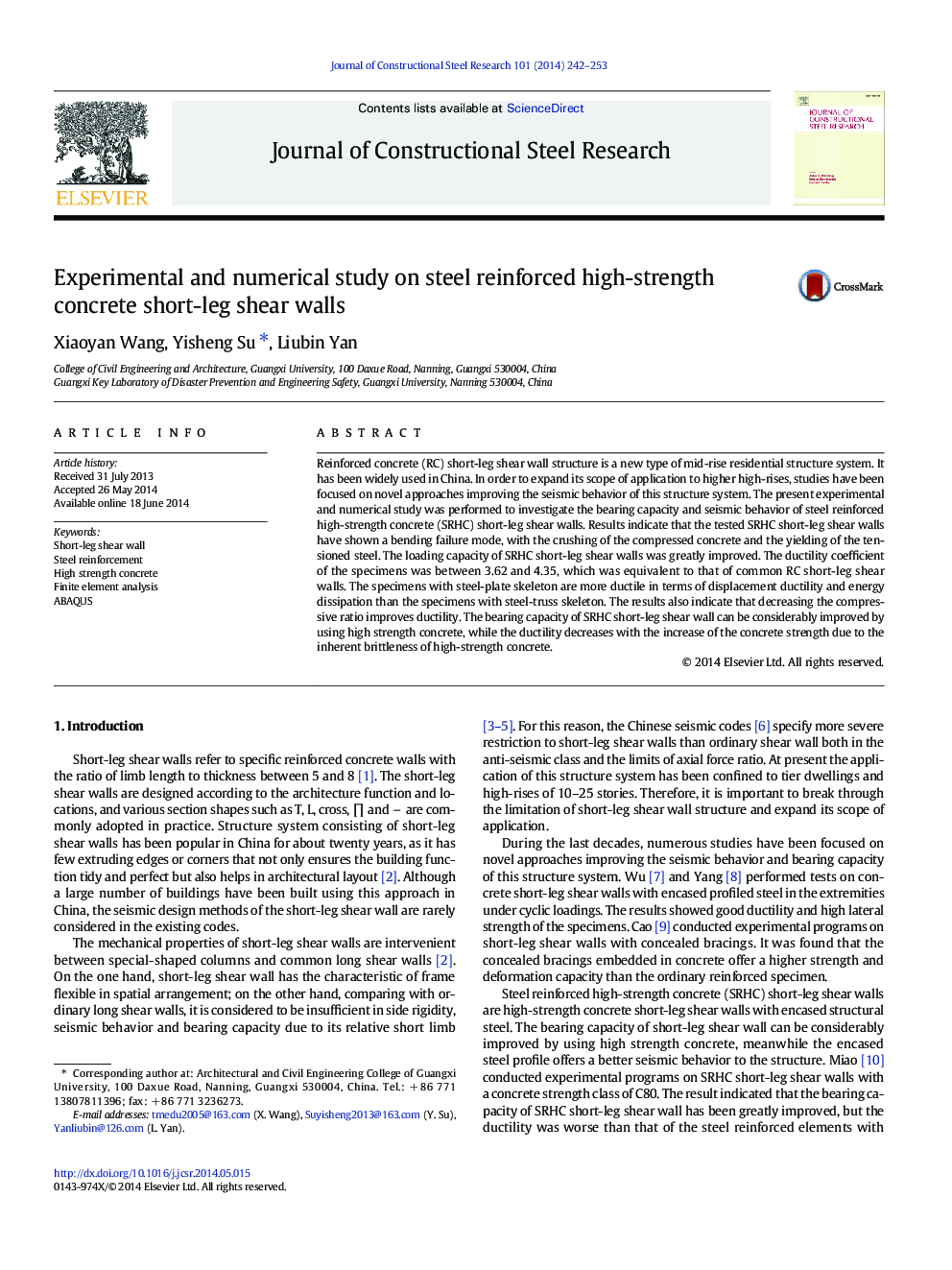| کد مقاله | کد نشریه | سال انتشار | مقاله انگلیسی | نسخه تمام متن |
|---|---|---|---|---|
| 284656 | 509156 | 2014 | 12 صفحه PDF | دانلود رایگان |
• The present work focused on a new approach to improve the bearing capacity and seismic behavior of short-leg shear wall.
• The loading capacity of SRHC short-leg shear walls was greatly improved while the ductility was equivalent to that of common RC elements.
• Decreasing the compressive ratio and concrete strength of the specimens improves the ductility.
Reinforced concrete (RC) short-leg shear wall structure is a new type of mid-rise residential structure system. It has been widely used in China. In order to expand its scope of application to higher high-rises, studies have been focused on novel approaches improving the seismic behavior of this structure system. The present experimental and numerical study was performed to investigate the bearing capacity and seismic behavior of steel reinforced high-strength concrete (SRHC) short-leg shear walls. Results indicate that the tested SRHC short-leg shear walls have shown a bending failure mode, with the crushing of the compressed concrete and the yielding of the tensioned steel. The loading capacity of SRHC short-leg shear walls was greatly improved. The ductility coefficient of the specimens was between 3.62 and 4.35, which was equivalent to that of common RC short-leg shear walls. The specimens with steel-plate skeleton are more ductile in terms of displacement ductility and energy dissipation than the specimens with steel-truss skeleton. The results also indicate that decreasing the compressive ratio improves ductility. The bearing capacity of SRHC short-leg shear wall can be considerably improved by using high strength concrete, while the ductility decreases with the increase of the concrete strength due to the inherent brittleness of high-strength concrete.
Journal: Journal of Constructional Steel Research - Volume 101, October 2014, Pages 242–253
